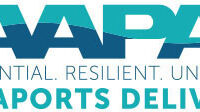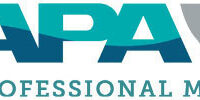Engineers Utilize Mix of Strategies to Address Workforce Needs

Changing technology, evolving needs and the aging of both port infrastructure and workers have port engineering departments scrambling to keep enough engineers on staff who are qualified and trained to handle the challenges.
Even ports with more robust engineering departments, such as Port Tampa Bay, are feeling the pressure. Patrick Blair, vice president of engineering, has a staff of about 16, including five professional engineers, three professional land surveyors and two CAD draftsmen. But, the port currently has 18 capital projects in design or permitting or under construction, plus ongoing annual projects such as fender and bollard replacement.
Blair’s strategy has been to do as much of the engineering work as possible in-house. That has meant getting some engineers certified as scuba divers to dive-inspect berths and getting others FAA-licensed to fly drones for aerial surveys and topographical studies.
But it is still a challenge to attract new talent. Getting young engineers into the pipeline has proven a tough nut to crack for ports of all sizes.
Blair was a structural engineer who worked in construction before applying for a project manager’s position at Tampa a decade ago. “I had no idea what the Tampa port even did at the time,” he said. When his boss retired in mid-2021, Blair took his job and in turn promoted his righthand man and so on down the line. “We bumped everybody internally but we’re still a position down and we’re busier than we’ve ever been,” Blair said.
With exceptions like Texas A&M Maritime Academy and graduate-level Lamar University, most schools don’t introduce students to the niche specialty of port engineering. Internships are a key strategy for making that introduction at most ports. At the Port of Galveston, which enjoys proximity to both schools, about half the staff portwide started out as interns, said Rodger Rees, port director and CEO of Galveston Wharves at the Port of Galveston.
“Almost every one of our engineers is from Texas A&M Maritime Academy,” Rees said. “What we do is get them as soon as we can from an intern standpoint, and in almost all cases they have worked out as an intern and then accepted a position full-time.”
Rees also uses lunch-and-learn sessions to keep all port employees up to speed on changing environmental requirements and other topics of interest to the engineering staff, and the port is providing tuition reimbursement to help one staff member complete his engineering degree.
For mid-career professional development, Robin Warrick, manager of the marine division at consulting engineering firm LJA, values participation in organizations like the Coasts, Oceans, Ports & Rivers Institute (COPRI), part of the American Society of Civil Engineers (ASCE). He’ll be at the institute’s triennial conference – Ports ‘22 – in Hawaii in September to network and share knowledge with other industry professionals.
Like most, Warrick first applied his engineering skills elsewhere before migrating to the ports industry. “Going through college, I didn’t know about marine structural engineering,” Warrick said. “I didn’t give it much thought until I got out into the workforce and started getting exposed to projects that had that marine component and adopted that path because it was interesting.”
COPRI also serves early-career engineers and has 10 graduate-level student chapters in addition to 10 professional chapters. Its “Introduction to Port Engineering,” a 12-week guided online course, is currently the best-selling course in ASCE’s catalog and is used by port engineering departments and as a primer for non-engineering port staff, said institute director Tom Chase.
Other mid-career development tools, like AAPA’s Professional Port Manager (PPM) Program, go beyond the technical to include leadership training. Tampa Bay’s Blair liked it enough that he plans to put other staff members through it, along with local programs like Leadership Tampa Bay, which are highly encouraged by the port’s executive staff.
COPRI also offers a mid-career port engineer certification program for practitioners with 10 years of experience or six years and a master’s degree in their discipline.
Some ports are seeding interest in port engineering at a younger age. Seattle’s Maritime High School, launched in September 2021 by Highline Public Schools with the support of the Port of Seattle and other partners, recently organized a student design challenge led by engineers from local marine construction firms.
Down the coast, the Port of Long Beach is partnering with the Long Beach Unified School District to support the Advanced Manufacturing, Construction and Engineering (ACE) Academy at Jordan High School to help nurture interest in port engineering and other port-related careers.
The consulting engineers ports rely on for expertise that they don’t have in-house also are feeling the squeeze poised by the “silver tsunami” as senior engineers reach retirement age – and not enough young engineers are turning to ports as a career option.
“There’s a significant aging-out factor,” said Keith Hall, president of electrical engineering and lighting systems firm Hall Engineering Group. “We’re not really seeing a replacement of qualified young talent coming into our field to support ports in the future.”



